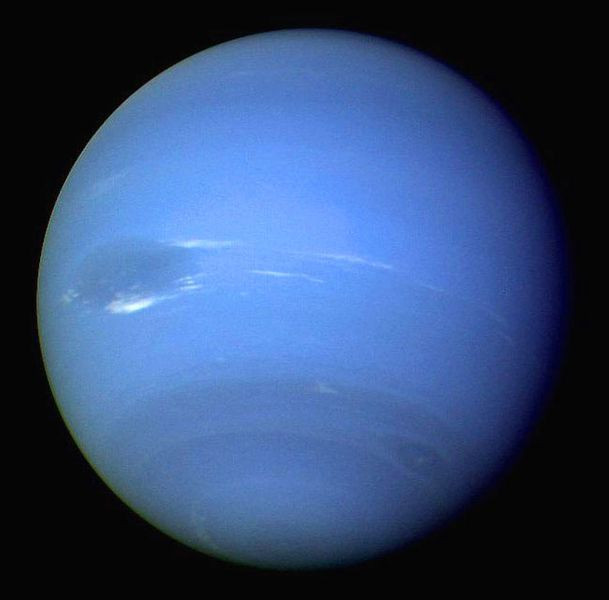
The new Neptune moon discovered by the Hubble telescope is the 14th for the outer blue-green planet. The new Neptune moon is known as S/2004 N 1.
The moon was discovered on July 1 by Mark Showalter of the SETI Institute in Mountain View, California. The moon is the smallest in the Neptunian system. The light given off by the moon is said to be 100 times fainter than the smallest star able to be seen without the use of a telescope. Showalter said in a statement the small moon was not easy to find.
"The moons and arcs [segments of rings around the planet] orbit very quickly, so we had to devise a way to follow their motion in order to bring out the details of the system. It's the same reason a sports photographer tracks a running athlete - the athlete stays in focus, but the background blurs."
The newly discovered moon measures only 12 miles across. The largest moon in the solar system also orbits Neptune -- Triton, which is 1,680 miles in width. It has a retrograde orbit, meaning is circles Neptune in the opposite direction the planet spins. According to some reports Triton's strange orbit has some scientists believing it is a dwarf planet stuck in Neptune's gravitational pull.
The Hubble telescope has just made what could be one of its last discoveries. NASA plans to keep the telescope operational until 2018. Hubble will then be replaced by the James Webb Space Telescope.
HOT NEWS NOW
Jodi Arias, Casey Anthony Why Did These Women Capture The Attention Of A Nation? [EXPERT INTERVIEW AND VIDEO]
National Museum Of Natural History D.C Welcomes Rare T-Rex Skeleton On Long Term Loan [VIDEO]
Latinos In East Los Angeles Protest Zimmerman Verdict; Why Have Hispanic Groups Been Silent On Trayvon Martin Case?
© 2025 Latin Times. All rights reserved. Do not reproduce without permission.




